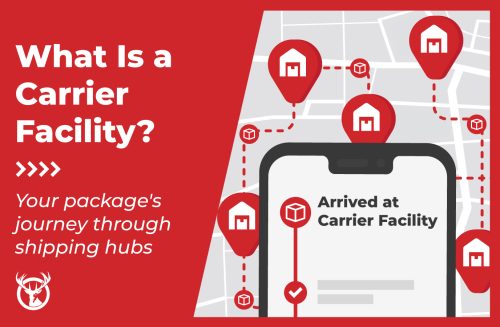Landed costs cover the cost of getting a manufactured good to your distribution center so you can send it to a customer after they buy from you. It seems simple, but the math behind the term is more complex than most realize – and unfortunately, more complicated than many ecommerce shops can do on their own.
That deception gets many new businesses in trouble when it comes to paying their bills and turning a profit. We want to eliminate the misunderstanding by helping you understand landed costs and think of ways to manage them. We’ll start by getting everyone on the same page with the landed cost definition.
What is landed cost?
Landed cost is the total cost of landed shipment, covering purchase through arrival at your facility. This total includes your purchase price, freight shipping expenses, shipping insurance, potential taxes and customs duties, transaction fees, brokerage fees, port or terminal fees, and anything else it takes to get inventory through your dock door. Landed costs are typically associated with international shipping costs, such as various fees and taxes.
That list can be deceptively simple. Many businesses struggle to understand their landed costs, which makes it challenging to understand revenues and profit. Once you know it for your products, you can better handle your overall operational costs and make smarter decisions around inventory, customers, and growth.
How do you calculate landed cost?
Computing a landed cost calculation is complicated, so you’re going to want to gather as much data as you can from across your transport, warehouse, and other system tools. Everything gets combined based on how you move your freight to your distribution center or fulfillment warehouse – that’s one reason most companies calculate landed costs monthly or quarterly.
While your exact mix may differ based on your products’ uniqueness (such as increased crating and handling costs for specific materials or extra fees for reefer trucks), here are some elements generally included in a list of landed cost ingredients. We’ll look at broad categories and note some elements that might not seem so obvious when calculating landed costs, such as insurance currency conversion and exchange rates.
Landed Cost Formula
The landed cost formula is in its most basic form this: Landed cost = customs + risk + overhead + product + shipping. Some of the variables will be in percentages and others may be whole numbers, and ultimately the inputs of the formula will depend on many different components. While it is easy to find a landed cost calculator on the internet, it is unlikely to be accurate because of the complexity of calculating landed costs.
What are the components of total landed costs?
- COGS (cost of goods sold) — cost of the products (the cost to purchase or create each product covered)
- Freight fees — this covers CIF (cost, insurance, and freight) expenses that you may face, and your CIF agreements can help you understand what you have to pay and when responsibility (or liability) for goods transfers from seller to the buyer
- Additional insurance, compliance, and mitigation costs (from audits to safety stock)
- International Shipping /carrier fees for moving the goods (as well as domestic). Of course different countries will have different fees, so this can vary wildly.
- Brokerage fees, though some businesses are moving to digital freight networks over brokers
- Taxes for domestic goods
- International customs fees including tariffs, taxes, VAT, duties, levies, and even some port or harbor fees
- Overhead related to inbound freight — many costs are apparent, but overhead also includes your exchange rates and payment processing fees, which are easier to overlook
Often, it’s challenging to gather all of these costs. You’ll be tracking costs across your manufacturers, shipping partners, carriers or freight service providers, and potential government costs such as customs, taxes, and inspections. Costs also come from multiple operations in your own company (procurement, sourcing, warehouse labor, and more). Internal numbers can be easy to track for specific goods or timeframes. Still, you may struggle to capture data over a specific timeframe or to split it up in a way that makes understanding landed costs easy.
It’s worth mentioning that some supply chain and ERP software comes with landed-cost modules. You’ll spend a chunk of time setting them up to determine how you want to calculate landed costs and where to get needed data. Afterward, you can automate data collection and even reporting to avoid inconsistencies or incongruent information.
Landed cost calculation case study example: wooden serving board from China
Kevin Zimmermann, owner of eBrandary, where he serves as an expert in global sourcing, manufacturing, and importing, says, “to calculate a true landed cost requires a little more thought than marking up your first cost by a percentage. Kevin Zimmermann knows what he’s talking about as he has spent the last 20 years in the industry, with the last nine as Director of Global Sourcing and Imports at Thirstystone, where he worked extensively on calculating the landed costs of products as one of his primary job functions. Here below he provides us with a real life example of how landed costs are calculated:
“Let me explain each facet of obtaining a landed cost and why each calculation is important. There is some general information we should know first in preparation to working on our estimated landed cost.
Country of Origin: This is important to note, especially, after the Section 301 tariffs became a major factor a few years ago for goods produced in China.
Master Carton Quantity and CBM of the Carton: We need this information so we can calculate our freight rate as accurately as possible.
HTS Code: An HTS code is needed so we can correctly calculate the duty for your product plus any additional tariffs that apply to the product.
Incoterms: These terms are important for you and the factory as it is the formal point that ownership of the goods is transitioned. The price you pay the factory can be impacted based upon when the ownership transfer changes from the factory to your business.
Below is an example of the calculations we should make to come up with our Estimated Landed Cost. In our example we are going to imagine we are buying a wooden serving board from China.
Item: Wood Serving board
Country of Origin: China
Master Carton CBM: 0.0284
HTS Code: 4419.90.9000
Agreed Price Paid to Factory: $4.95
Duty: 3.2% – The duty rate is determined by your products’ HTS code, and the calculation is made by multiplying the factory cost by the duty rate. $4.95 * .032 = $0.16
Tariff: 7.5% – Any tariff is determined by the country of origin and your products HTS code. Tariff does not always apply, but in this example, it would apply so it will be calculated. The calculation is made by multiplying the factory cost by the tariff rate. $4.95 * .075 = $0.37
Any Additional Expenses: Sometimes there are additional expenses that you might want factored into your landed cost. In this example, we’ll be paying an overseas agent a commission based on our factory cost. Let’s assume there is a 6% commission for the agent. $4.95 * .060 = $0.30
Freight Rate Per CBM: Your freight forwarder should be giving you a quote or a rate at which your product would be imported. Either as a cost of a full container or per CBM. The master carton information mentioned earlier is important here. Let’s assume we have a full container cost of $7,500 at 56 CBM. The master carton has 6 pieces in it and a CBM of 0.0284. We need to get a cost per piece. First, we need to get a cost per CBM in the container. $7,500 / 56 = $133.93. Next, we’ll do the calculations to come up with a master carton cost in that container from the calculation we just made. $133.93 * 0.0284 = $3.80 per master carton. Lastly, we divide the cost per master carton by the number of pieces in the master carton to get a cost per piece. $3.80 / 6 = $0.63.
Final Estimated Landed Cost: Now we add up all of our calculations to come up with our final estimated landed cost. $4.95 + $0.16 + $0.37 + $0.30 + $0.63 = $6.41″
Is landed cost the same as COGS (cost of goods sold)?
The cost of goods sold, or COGS, is a part of your landed costs, but not the whole part. So, landed costs include COGS and many related expenses around distribution, fulfillment, and some labor.
COGS calculations often focus on cost per unit, though you can also look at these elements quarterly to better understand how your overall expenses are evolving.
Your COGS only covers the cost of producing or attaining the goods you sell. If you manufacture your goods, then it’ll be dominated by labor and materials. If you’re dropshipping or running a marketplace, COGS are mainly the price you pay to purchase the products you sell.
Some companies run advanced COGS calculations that help them get a fuller understanding of overall development and sales. Their calculations can include salaries for production or contractors, or any commissions you pay for affiliates who sell for you. Be sure you leave out everyday business expenses like any administration elements — leadership salaries, benefits, infrastructure, office supplies, etc.
How can landed costs be reduced?
There’s no magic bullet for reducing landed costs. You might be able to shave off some expenses here or there, but it will require some work. For many companies, the best starting positions are often investments of time or money. Working on relationships and finding new partners or firing up additional software and reporting tools can help you optimize landed costs as well as other parts of your supply chain.
Calculating the landed cost of your goods might make you think it’s time to work on reducing expenses or increasing the price of a product, especially if duties taxes are higher than you realized. There’s some staff due diligence designed to help you out, and we’ve got five areas for them to consider.
Here are a few significant opportunities to consider:
- Consider new suppliers: You might be able to find local or in-country suppliers for raw materials or to do your production. Reducing shipping and import duties / costs can save your business and give you shorter lead times, allowing for better inventory utilization and optimization. Using a domestic supplier is not always cheaper, but we see more companies make the shift based on the quality of goods and reduced disruption risks – like what COVID caused.
- Renegotiate with carriers: Carriers provide volume and other discounts. As you grow, you might be able to work with a carrier and achieve a lower rate, or you could find a replacement that makes a better offer. Working with a 3PL can also help you cut costs by giving you access to higher volumes for discounts.
- Optimizing warehouse staff and space can make it easier for your teams to do intake and process inventory to get it on your shelves. This reduces the final parts of landed costs, which may face some of the highest per-hour rates in terms of labor.
- Look for new locations: Shifting storage closer to the port or other entry points you use can trim down costs. If you find a port located near your audience, then a local warehouse may serve to reduce landed costs as well as your fulfillment costs.
- Optimize inventory: Landed costs include COGS and any costs for the inventory that is damaged in transit, spoils, or has other issues. Better management of your inventory can help you avoid spoilage and loss, plus protect your budget from over investment. Potentially, you could order less of some products as well.
Depending on your supply chain and partners, you may be able to use automation to help establish landed costs. It’s a smart way to tackle the immense calculations required. You’ll generally be more accurate with cost understanding and can reduce labor around understanding landed costs.
Profit, shipping costs, and important considerations
International commerce is complex, and an understanding of landed cost is important to ensuring better profit margins. There’s a lot to calculate for each shipment, and freight costs are dynamic, so you need good projections as well as data capture.
Understanding broad expenses as well as your per unit costs is a smart place to get started. It’ll help you start to see if shipping customs may be prohibitive for you, if you need to reduce the overall cost of a product, or if other per item expenses are getting in the way of your business.You’ve likely got some specific questions about understanding and calculating landed costs. So, contact us and tell us a little more about your situation and products. Red Stag can help with your US fulfillment and either provide you with savings opportunities or point you in the right direction for a partner that can.











